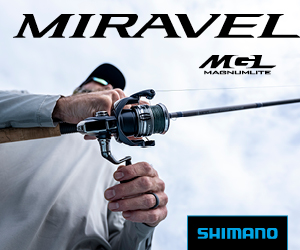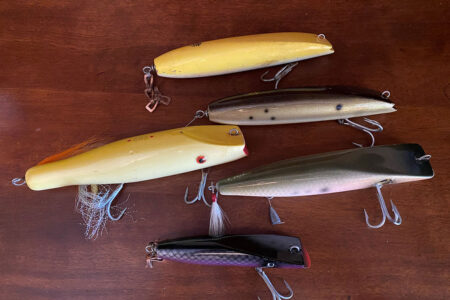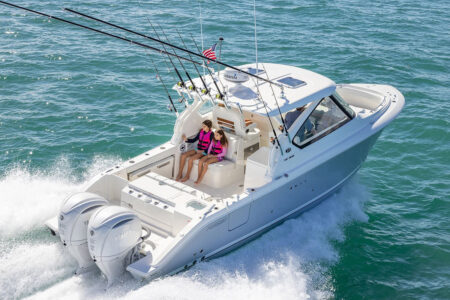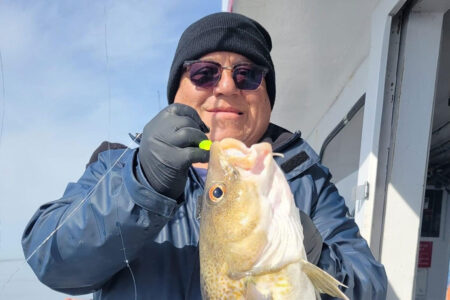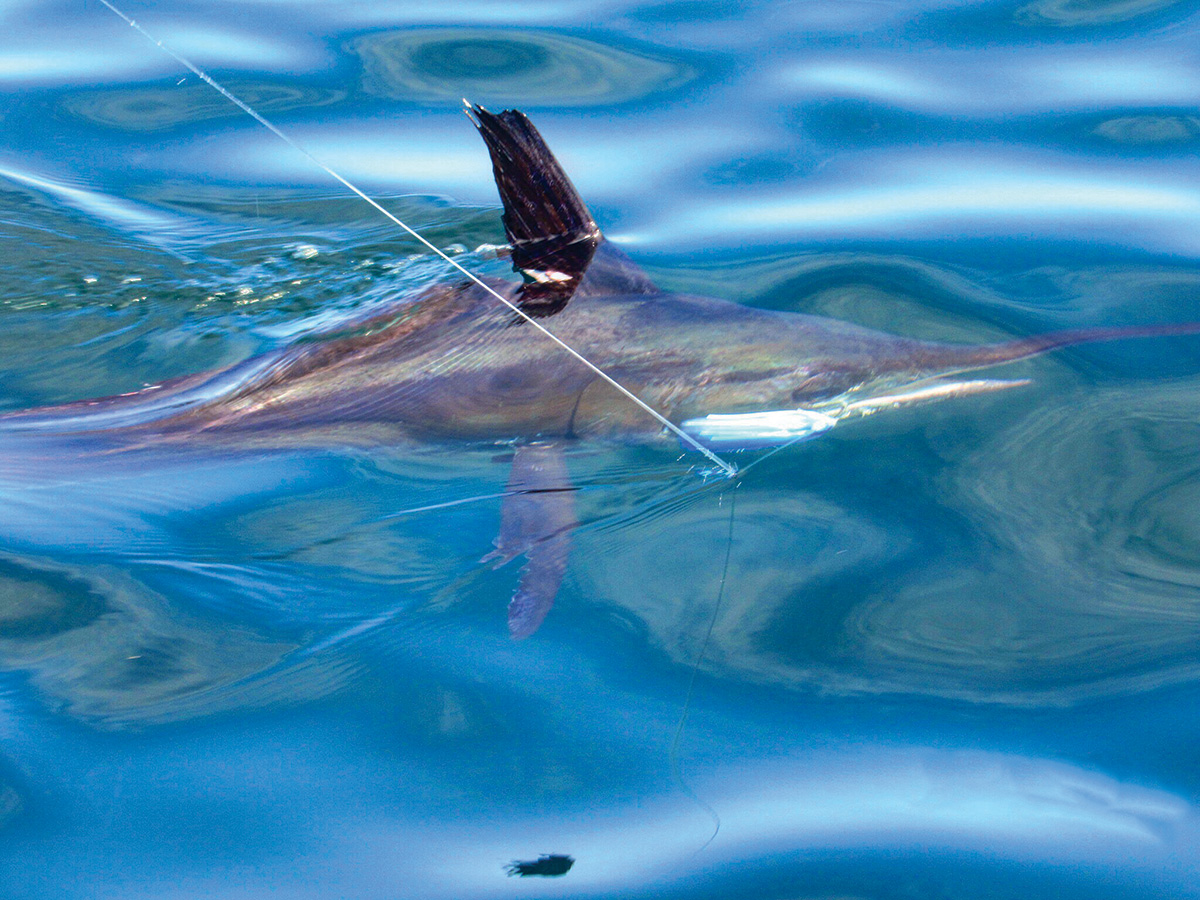
Never quit learning, even during summer vacations with the family.
The spread is going to be nothing but plastics!” was the last thing my dad said as we were taking care of the final details for our upcoming tuna travel trip. I was worried, taking 10 days off work and I wasn’t even getting one ballyhoo in the spread.
All the people I had talked to, as well as previous trips under different captains had me believing we not only should have ballyhoo in the spread; we needed ballyhoo in the spread. But the last night before our trip, we packed all the gold reels we owned, consisting of 50s and 20s, a mix of different color and sized Avets, and a few big game spinning reels to round it off.
All different kinds of offshore lures were packed away, none of which consisted of any kind of skirt for a natural bait. Our trip was underway, and my father would be damned if there was going to be any kind of natural bait in the Hi Flier spread. We arrived at our rented condo in Ocean City, MD, unpacked the car, splashed the boat at the public ramp, and made a trip to the local supermarket for supplies. With heavy winds predicted for the weekend, we’d spend the next few days prepping; crimping rigs, triple checking leaders, making pitch bait rigs and presetting drags.
While I was still nervous about our game plan, excitement was starting to take over. After taking a look at the offshore weather predictions, Monday looked like a go. Luckily, in our crew the first day was Capt. Darren Dorris, a seasoned offshore fisherman from New Jersey and a close family friend. He knew just what we needed to convince my father that the spread needed a little tweaking.
It was Darren who broke the ice after dinner. “What’s the plan for the spread?” My dad, knowing there was a reason behind the question rattled off an eight rod plan that consisted of Canyon Runner spreader bars, cedar plugs and daisy chains. After a little reasoning, Darren was given three of the eight rods in the spread. We buzzed over to the local tackle shop to pick up some Joe Shutes, with my dad only buying two 1-ounce blue and whites and two 1-ounce pink and whites. While not nearly enough, it was definitely a start. Darren had some Shutes with him so we could mix it up a little with some 3-, 5-, and 8-ounce heads.
Day 1 – New School
With reports coming in on an early morning yellowfin bite at the Hot Dog, we left the dock at 3:30 a.m. On the way out, Darren taught me all about rigging “ballies” with both the Joe Shute skirts and a naked swimmer, rigged with an egg sinker. Once at the grounds, we put out our final spread consisting of two Canyon Runner spreader bars, two 1-ounce Joe Shutes, a 5-ounce Joe Shute, a cedar plug, a squid chain, and two naked swimmers. We worked the area for about an hour before deciding to make a move due to slow action and steady stream of grass, pushing east to the Poorman’s Canyon. About a mile or so shy we came upon a few very interesting rips and decided to lay out the spread. As the last rod went out, the 50 in the outrodder (yes, bunker spoon style, no outriggers on this boat) rigged with a 1-ounce Shute started to hum.
The hit wasn’t explosive, so at first we thought it was a little mahi. Then the bill broke the surface, and the 8-foot body followed of the world-class sized white marlin. Soon after, he was greyhounding and the 50 was singing that tell-tale song of a true pelagic. After a 45-minute battle and some sweatshirt sleeves as make-shift bill gloves, our first fish of the trip was captured, pictured and released. The white was estimated at about 90 pounds. While everyone was thrilled, we still had nothing in the cooler for dinner.
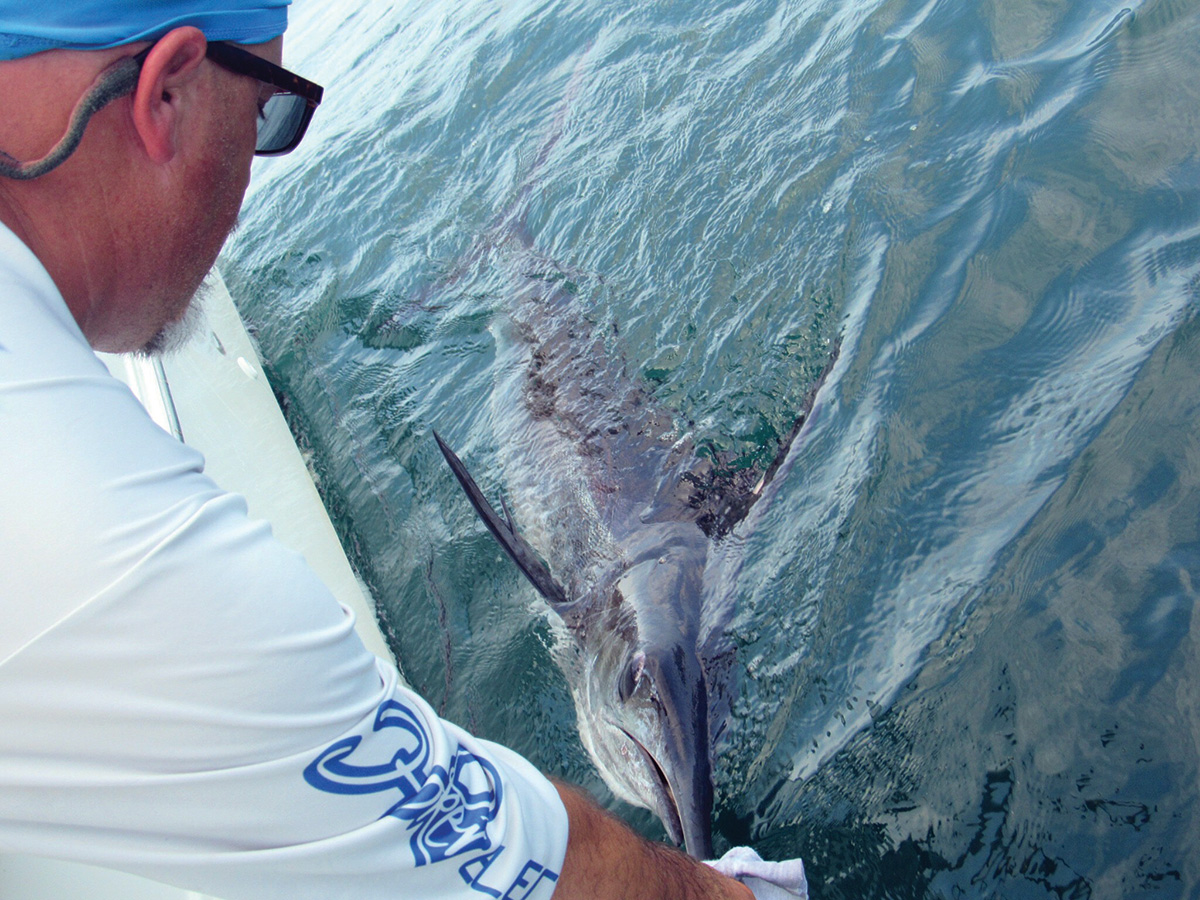
After getting the spread back out, some time passed by before two rods got lightly whacked; no screaming drags, just a little tap. Then the way back ballyhoo went off. But just as the rod was handed down to me it stopped running. A few seconds later resumed. Not quite sure what was on the other end, the boat was put in neutral and I started to fill the 50 class reel back with line. Only as the fish got close did some guesses start to come up; with the sound of mono slicing through the water and the flash of electric bars against a navy blue backdrop we knew for sure that it was a wahoo on the end. With a fish in the cooler, we then had to address the havoc caused to the spread, including chafed spreader bars and a missing daisy chain. We really paid for that one. At the end of the day, it was the first billfish on the Hi Flier and my first ever wahoo.
However, my father took quite the harassment of both fish coming on ballyhoo. He kept cool though, as he had nothing to prove with endless stories and pictures of him with quality tuna on nothing but artificials.
Day 2 – Old School
Our next trip, and last trip of trolling, had us not only on a late start due to storms, but out in very rough conditions; 3 to 4s in a tight chop, doable, but not a lot of fun in our 25-foot center console. The day prior we picked up some intel at the local tackle shop of a bluefin bite at Massey’s Canyon, but it was an early bite, one of those “if you don’t have yours by 8 a.m. you might as well pack up.” About 5 miles short, and at 7:45 a.m. we came across hundreds of chick birds dancing on the surface, probably the best example I’ve ever seen of “slicks and chicks.”
Chick birds are small storm petrels that feed on the floating particles of fish that float to the top of the water after a feeding frenzy has ensued under the surface. So, theoretically, chicks equal fish. We made only one unsuccessful pass before continuing on to Massey’s which was dead; no birds, no slicks, and no readings. My father said we were going to head to the Hot Dog; after thinking that over for a minute, I went and had a talk with him. We discussed that what he had passed up a mile or two back had been what we were looking for everyday we had been out. With that little conversation, the boat was heading back west, and it was very clearly said that it was because of me.
By the time we got back on that spot again almost two hours had passed. But wouldn’t you know, the chick birds were still there, and they were heavy. With shaking hands I got the whole spread out while dad stayed at the wheel. Dad put the boat towards a particularly dense spot where the birds were picking, and as soon as the spread went over it, I watched one rod with a daisy chain get popped and bitten off. The spreader bar got whacked but didn’t come tight, and then the outrodder with the ballyhoo went off. My brother Max reeled feverishly to get tight, but an empty Joe Shute was the only thing to come back; with rough seas and a heavy head on the lure, hooks can be shaken quite easily. We got lucky with the white marlin the day before, but we paid for it with this fish.
I replaced what needed to be replaced and put the spread back out until we located that dense collection of chick birds picking at the surface. Again, as soon as we went over a rod went off. This time, it was the Canyon Runner spreader bar that got crushed. Close family friend Steve Spina grabbed the rod, but the fish was not coming easy. After about 45 minutes, we could see color. With 10 feet of line left to go a roller guide broke, leaving behind an edge that resembled the sharpest of razor blades. I reached down for the leader as Steve cranked the last few feet of line. Max came in with a gaff and stuck him right in the back. Not the best shot, but we got him. I stuck him a second time for good measure; good thing too as the initial gaff was a striper gaff that broke as we decked a 60-pound tuna. With conditions building, and an exhausted crew, the trip ended there.
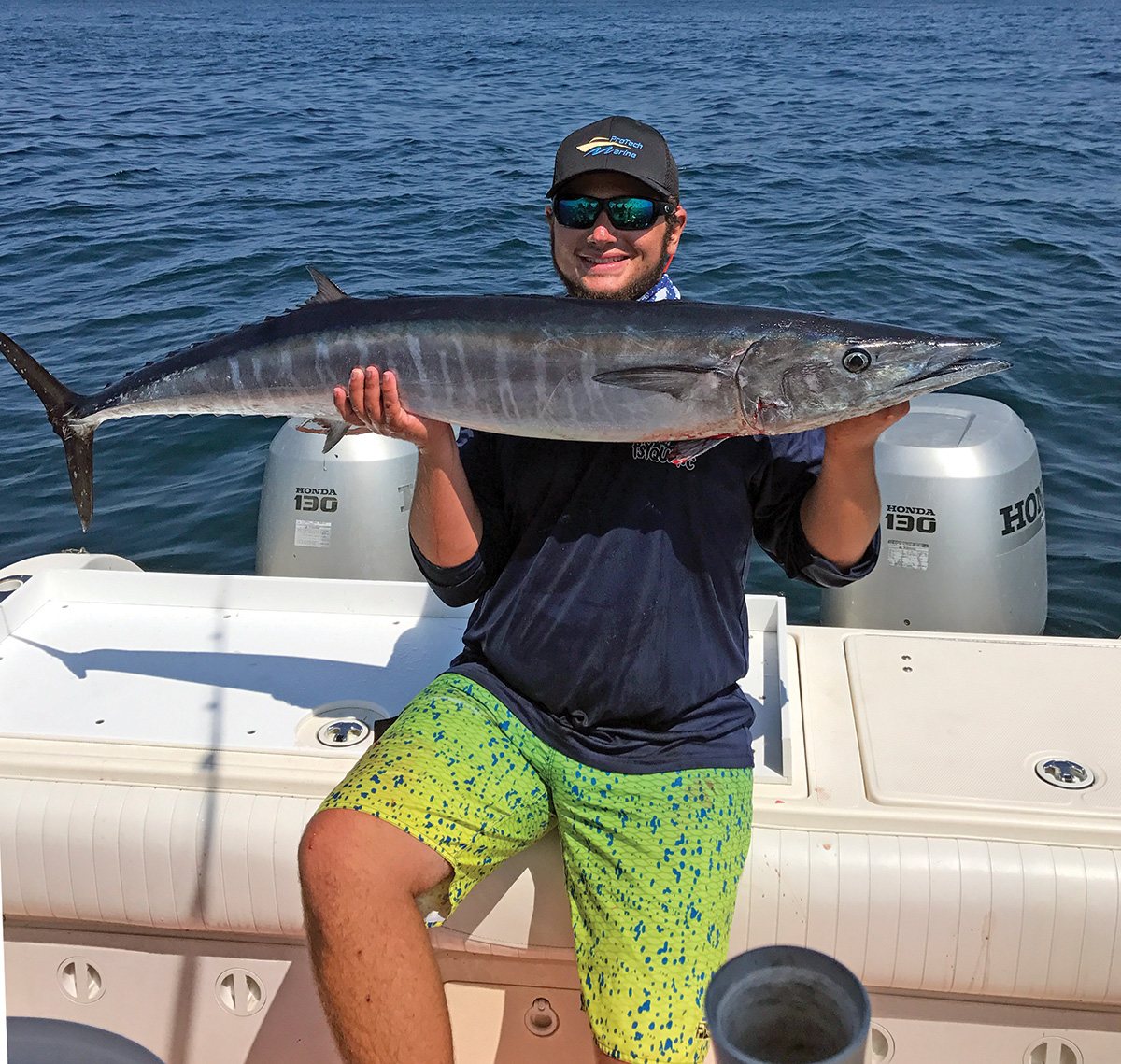
As the conversation that night bubbled around the day’s action, I stopped to think about how we caught our only tuna of the trip – plastic. While we did land multiple fish on ballyhoo, the plastics in the spread did just as well, and it was there I learned a lesson. Offshore fishing is constantly evolving with the latest and greatest lures. However, some are tried and tested.
Old school, home made daisy chains caught fish, flat lined cedar plugs caught fish, and a rainbow spreader bar caught fish. This trip to Ocean City was not only a great get away and time well spent with family and friends, but was also a great reminder for our crew to keep variety in the spreads.
Yes, always try the latest lures and strategies, but don’t forget about the old school stuff too.
The author’s father, Capt. Dave DeGennaro, runs Hi Flier fishing charters out of Barnegat Inlet.
